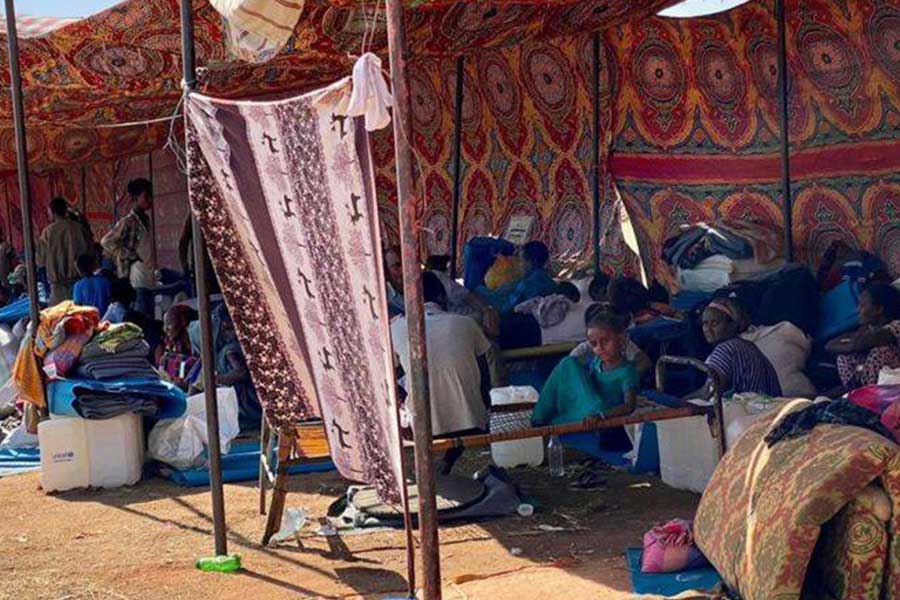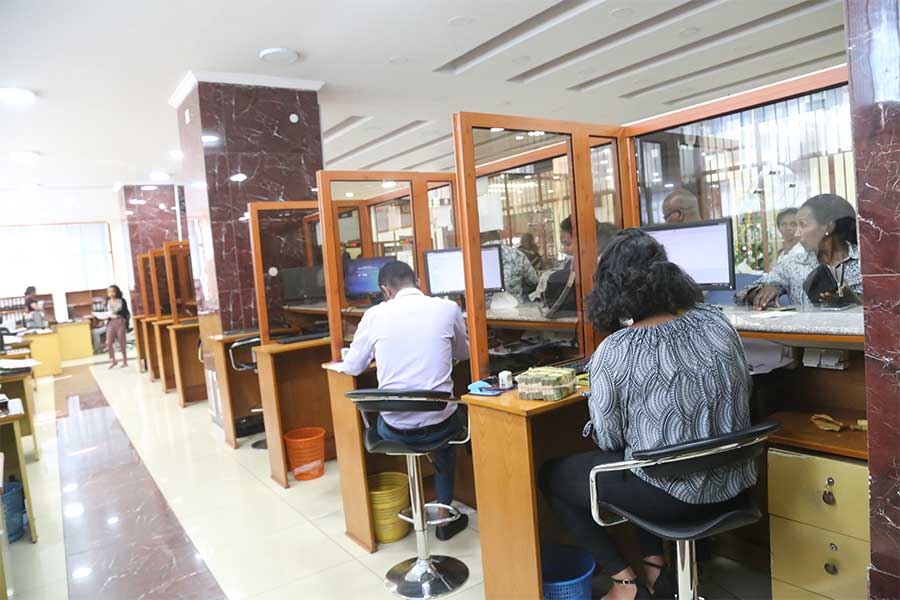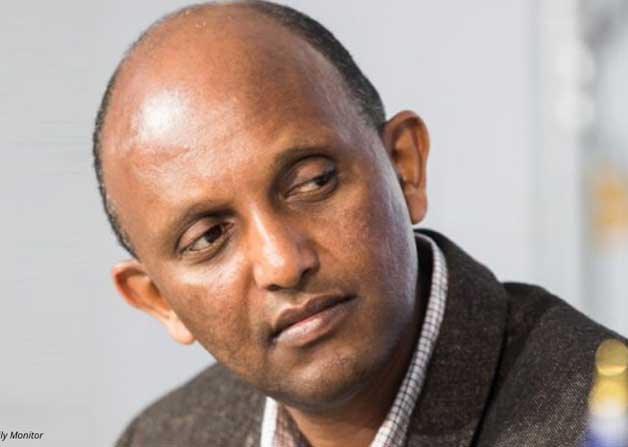
Viewpoints | Sep 01,2024
May 27 , 2023
By Ishac Diwan , Philippe Le Houérou
China’s cooperation with the IMF, together with more concessional financing by multilateral development banks, would go a long way toward putting poorer countries on a greener and more sustainable growth path, argue Ishac Diwan, a research director at the Finance for Development Lab, and Philippe Le Houérou, a former CEO of the International Finance Corporation (IFC), in this commentary provided by Project Syndicate (PS).
The sovereign-debt crisis was high on the agenda at this year’s Spring Meetings of the World Bank and the International Monetary Fund (IMF), with all eyes on China, the biggest creditor to the developing world, and the International Development Association (IDA), the Bank’s fund for the poorest countries. With many low-income economies already in or at high risk of default, China has been reluctant to write down the value of its loans and insistent that multilateral institutions, including the IDA, share the burden alongside other creditors – a contentious stance that breaks with convention.
There are strong arguments against IDA participation in debt restructuring. Its loans are highly concessional, with an average grant element of 50pc, compared to zero percent for market-based loans and 18pc for Chinese debt. In recent years, its commitments have surged in the face of multiple shocks, reaching 42 billion dollars in 2022. Moreover, it provides its financing through grants, rather than loans, to countries with high debts – self-termed "ex-ante implicit debt relief".
It would be grossly unfair to the taxpayers backing it if the IDA bailed out other creditors not once, but twice.
During the Global Sovereign Debt Roundabout, a centrepiece of the Spring Meetings focused on facilitating the debt-restructuring process, China apparently agreed to the Bank’s proposal to offer more lending through the IDA, rather than taking a haircut on outstanding debt. This agreement must still be clarified, but it could be a win-win: China’s cooperation with the IMF, together with more concessional financing by multilateral development banks, would go a long way toward putting poorer countries on a greener and more sustainable growth path.
For the IDA, the current question is how to operationalize this agreement in ways that help it regain its financial footing and effectiveness. The global debt crisis is weakening the three main ways in which the IDA funds its operations: debt service on past loans (seven billion dollars in 2022), contributions from donors (around 24 billion dollars every three years), and market borrowing.
Offering grants reduces future debt-service payments. Since 2010, the IDA has provided 81 billion dollars in grants. If these had been loans, the IDA’s current portfolio of 180 billion dollars would be nearly 50pc larger, producing more debt-service flows and greatly strengthening its borrowing capacity. The IDA's balance sheet will continue to suffer as long as the debt crisis lingers, causing more grants to be issued.
The IDA’s disbursements are now leaking to bilateral and private creditors. Recent empirical work shows that in highly indebted countries, one dollar of net transfer from the IDA was associated with 60 cents of net outflows to other lenders in 2021. Conversely, IDA disbursements spur inflows from other creditor sources in countries that are not highly indebted. Unsustainable debt burdens thus weaken the IDA’s effectiveness. A rise in donor contributions seems unlikely without progress on the debt problem, further reducing the IDA’s borrowing capacity.
The IDA’s well-being thus requires a quick resolution of the debt crisis. Sharing the burden of debt restructuring can help accelerate progress. This requires looking forward rather than looking back.
Suppose, for example, that the IDA contribution was determined by using comparability of treatment (CoT) rules based on past disbursements. A straightforward application of the traditional form of the rule in the case of Zambia, which has been trying to restructure its debt since it defaulted in 2020, would imply a 44pc haircut for all creditors, including the IDA. This would result in a loss of 335 million dollars. A more equitable method would reduce the IDA’s debt only when other creditors’ loans are written down to the point where they are equally concessional.
This fairer rule would result in a loss of 234 million dollars. We estimate that a similar treatment for all low-income countries currently in debt distress would cost the IDA between 3.5 billion to 7.6 billion dollars in haircuts.
Depending on which rule is used, these contributions would lead to a 70pc to 100pc increase in concessional lending to Zambia over the next three years. For all countries in debt distress, the estimated additional loans would be smaller, in the range of 20pc to 40pc above current IDA disbursements.
The main problem with a backwards-looking approach, however, is that it ignores the fact that the IDA is not a normal creditor. Over the course of the next decade, the IDA will provide large concessional net transfers, which include more grants than the losses implied by both CoT rules. For example, Zambia’s current IDA grant-equivalent allocation for the next decade would be over one billion dollars, much more than the loss implied by CoT rules (though the losses we estimate are exaggerated, as they ignore that the IDA previously provided large grants in addition to concessional loans).
The best way to facilitate rapid debt crisis resolution is to increase future contributions. In the case of Zambia, the current debt-sustainability analysts is predicated on a 4.5pc growth rate. If the IDA’s disbursements were to rise, Zambia would grow faster out of its debt crisis, and the losses suffered by creditors would be smaller – the outcome China is attempting to achieve in the ongoing negotiations.
This solution also aligns with the World Bank’s desire to increase its financial capacity as part of its ongoing efforts to scale up operations. There have been calls to double IDA funding over five years in this context. This would enable larger disbursements to countries suffering a debt overhang, which would, in turn, accelerate their recovery. But the IDA is already under pressure, having spent most of the resources of its current funding cycle, which ends in mid-2025.
To start scaling up its funding, it needs fresh resources. The Bank’s new crisis facility, which sits within the IDA, would be the ideal vehicle.
When stakeholders reconvene at the Summit for a New Global Financial Pact in June, they should focus on accelerating debt-restructuring negotiations and expanding the IDA’s lending capacity. Progress toward each goal requires progress toward the other. Unless both directions are pursued, the current vicious cycle will only persist.
PUBLISHED ON
May 27,2023 [ VOL
24 , NO
1204]

Viewpoints | Sep 01,2024

Fortune News | Nov 21,2020

Agenda | Jan 25,2020

Fortune News | May 06,2023

Editorial | Oct 05,2024

Commentaries | Nov 12,2022

Radar | Aug 06,2022

Life Matters | Aug 03,2019

Radar | Jan 23,2021

Radar | Oct 05,2019

My Opinion | 131970 Views | Aug 14,2021

My Opinion | 128359 Views | Aug 21,2021

My Opinion | 126297 Views | Sep 10,2021

My Opinion | 123913 Views | Aug 07,2021

Dec 22 , 2024 . By TIZITA SHEWAFERAW
Charged with transforming colossal state-owned enterprises into modern and competitiv...

Aug 18 , 2024 . By AKSAH ITALO
Although predictable Yonas Zerihun's job in the ride-hailing service is not immune to...

Jul 28 , 2024 . By TIZITA SHEWAFERAW
Unhabitual, perhaps too many, Samuel Gebreyohannes, 38, used to occasionally enjoy a couple of beers at breakfast. However, he recently swit...

Jul 13 , 2024 . By AKSAH ITALO
Investors who rely on tractors, trucks, and field vehicles for commuting, transporting commodities, and f...

Jul 5 , 2025
Six years ago, Ethiopia was the darling of international liberal commentators. A year...

Jun 28 , 2025
Meseret Damtie, the assertive auditor general, has never been shy about naming names...

Jun 21 , 2025
A well-worn adage says, “Budget is not destiny, but it is direction.” Examining t...

Jun 14 , 2025
Yet again, the Horn of Africa is bracing for trouble. A region already frayed by wars...

Jul 6 , 2025 . By BEZAWIT HULUAGER
The federal legislature gave Prime Minister Abiy Ahmed (PhD) what he wanted: a 1.9 tr...

Jul 6 , 2025 . By YITBAREK GETACHEW
In a city rising skyward at breakneck speed, a reckoning has arrived. Authorities in...

Jul 6 , 2025 . By NAHOM AYELE
A landmark directive from the Ministry of Finance signals a paradigm shift in the cou...

Jul 6 , 2025 . By NAHOM AYELE
Awash Bank has announced plans to establish a dedicated investment banking subsidiary...